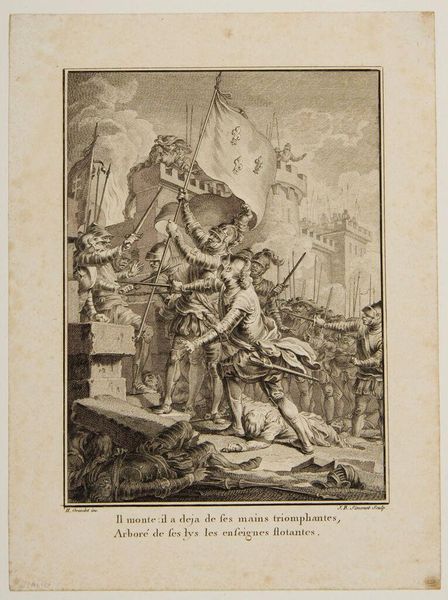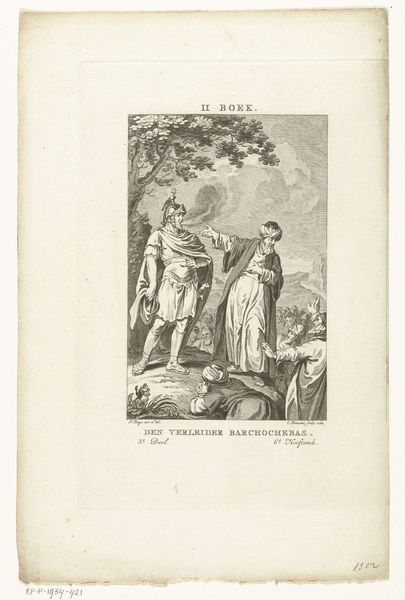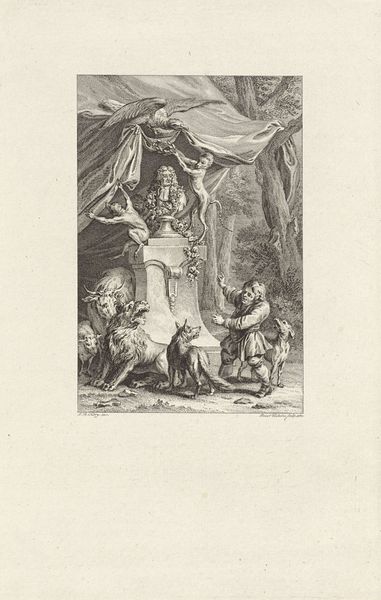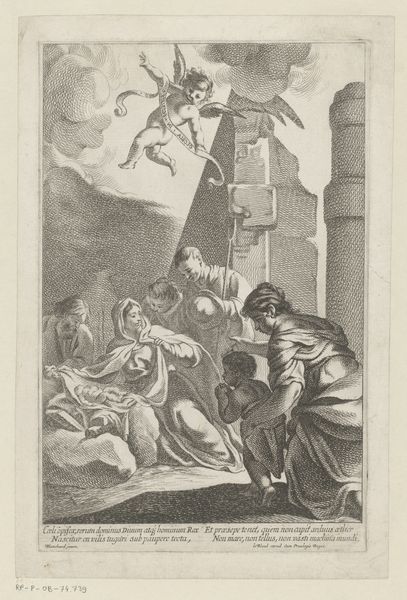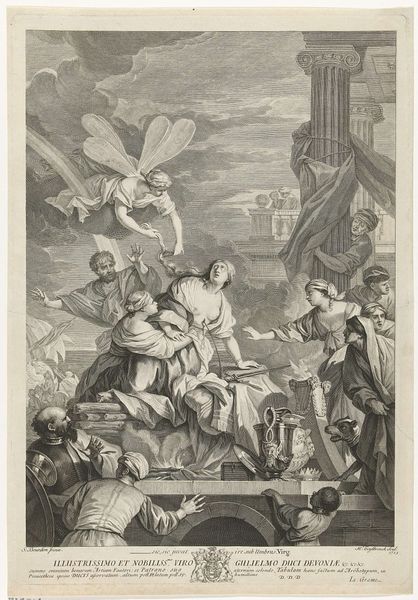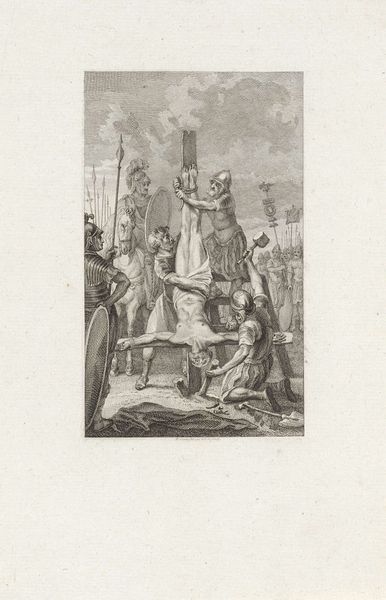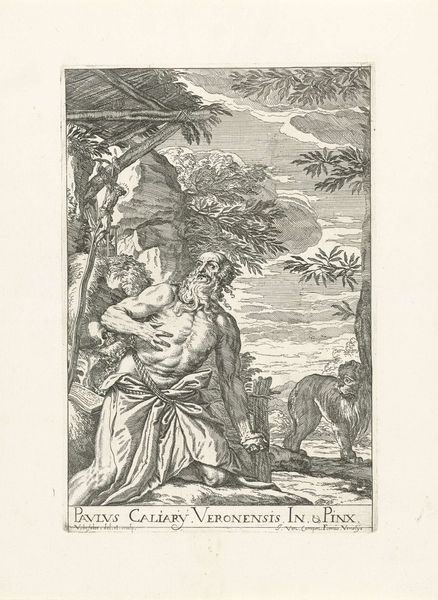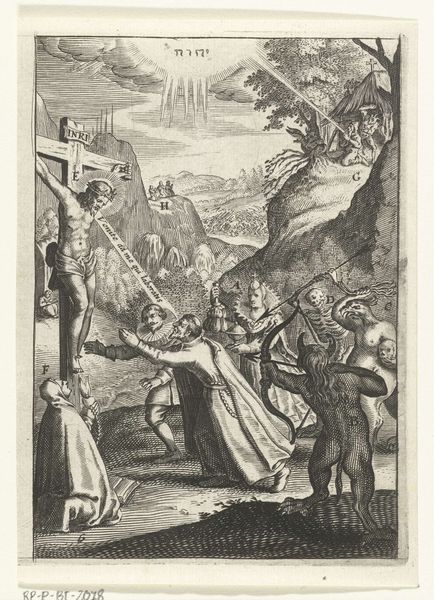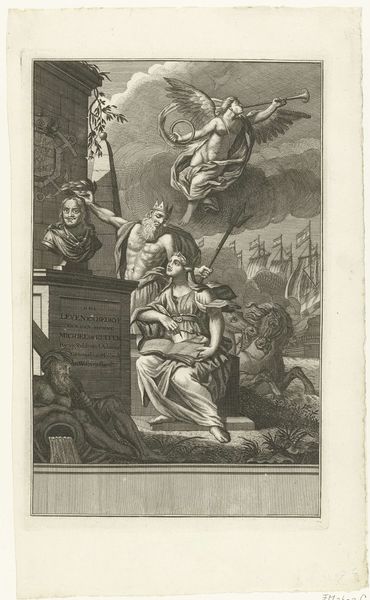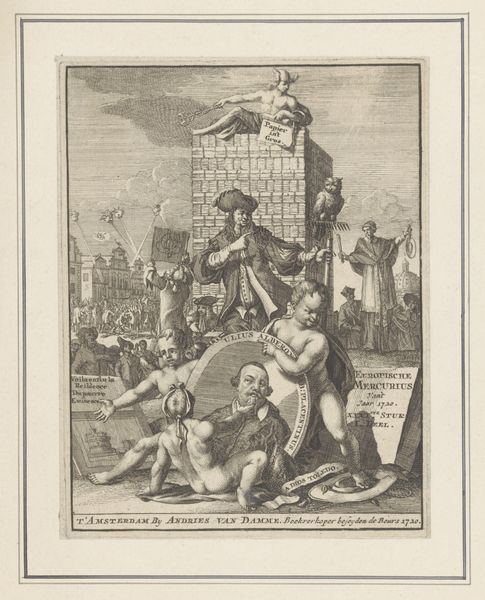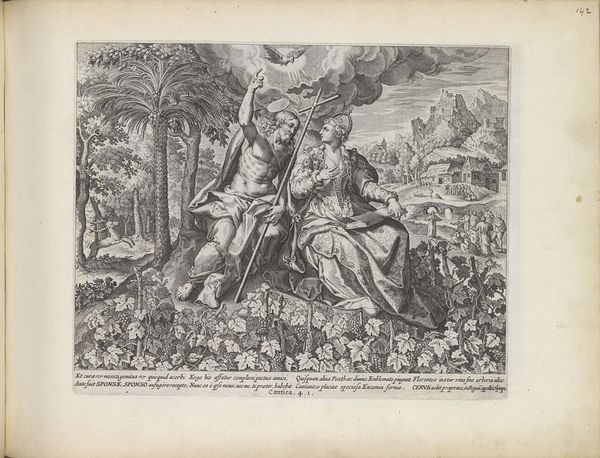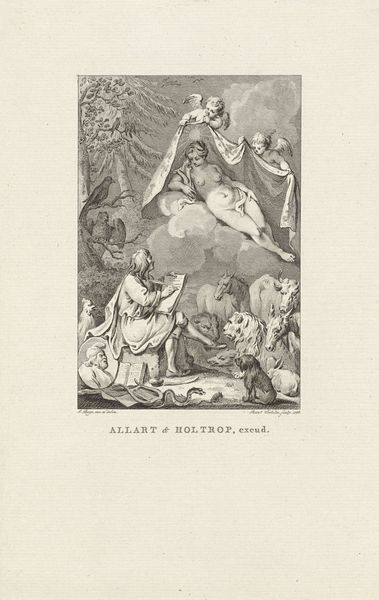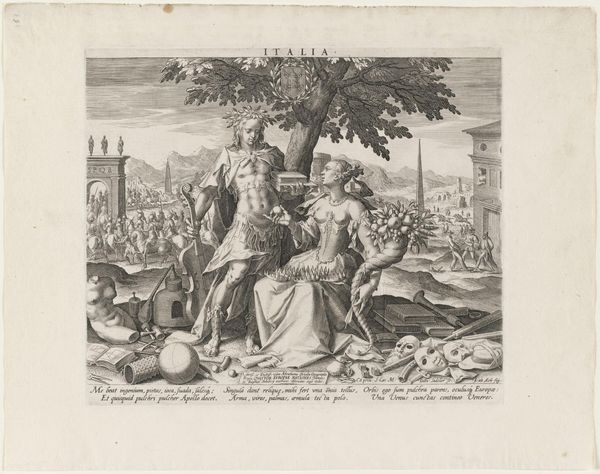
print, engraving
#
portrait
#
neoclacissism
# print
#
old engraving style
#
figuration
#
cityscape
#
history-painting
#
engraving
Dimensions: height 388 mm, width 254 mm
Copyright: Rijks Museum: Open Domain
Curator: Allow me to introduce "Mercurius," an engraving by Dirk Jurriaan Sluyter, dating back to 1830-1831. It resides here at the Rijksmuseum. Editor: It’s intriguing how the artist captures light using only etched lines. The density suggests both a weightiness to the materials depicted, but it also lends the piece a rather ethereal, dreamlike quality. Curator: Yes, the figure of Mercury himself stands atop a monument, while we see artists observing him from below. It really highlights the Neoclassical revival occurring during that time period. They sought to emulate classical ideals. Editor: And the choice of print, particularly engraving, speaks to its wide dissemination. Engravings, by their very nature, are about reproduction, reaching broader audiences, acting almost as a proto-mass media. Who was the intended audience and what ideas about Mercury or artistic practice was Sluyter hoping to disseminate? Curator: Likely aimed at fellow artists and perhaps collectors with a burgeoning interest in classical antiquity. Prints like these fueled the popularity of Neoclassicism. It connected a Dutch audience with idealized forms and narratives, which offered models for behavior and aesthetic refinement. Editor: Did the classical focus of this image function in dialog with, say, national identities or emergent European identities? How might its audience have made sense of classical form, here captured in miniature by a repeatable printing technology, while thinking about labor, skill, or the artist's hand? Curator: I think the tension you are outlining here really gets to a significant point, the negotiation between international and national identities within the scope of artmaking and civic engagement. The Dutch landscape framing a Greco-Roman sculpture offers the potential for a viewer to place their modern nation in a longer lineage of artistic greatness. Editor: A fascinating perspective indeed! The interplay of process, classical forms, and audience intentions is dense with complex historical currents that are subtly teased out in a small but powerfully articulated object. Curator: And, by analyzing "Mercurius," we are afforded a view into the values, techniques, and socio-political underpinnings of art and its engagement with the wider world.
Comments
No comments
Be the first to comment and join the conversation on the ultimate creative platform.
